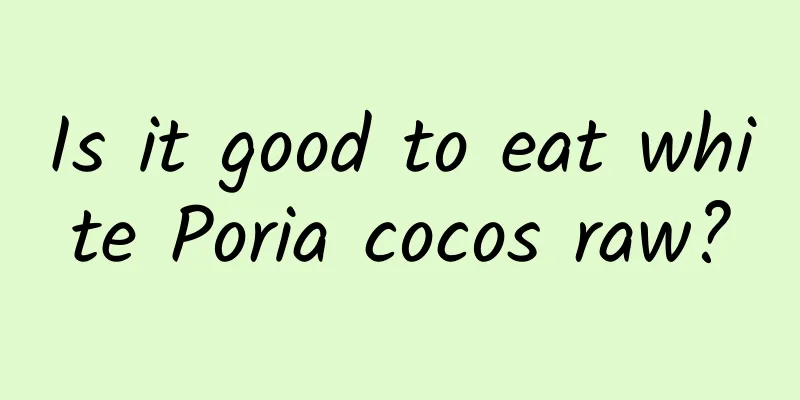The efficacy and function of wild indigo

|
Everyone is familiar with wild indigo, but some people are relatively unfamiliar with it. In fact, wild indigo is a relatively common Chinese medicinal material. So what exactly does wild indigo do? [Alias] Xiangkaikou, white cypress, indigo, nine-headed lion grass, alpine pepper, large-leaf pepper grass, yellow-ding bitter grass, opposite-leaf elderberry, green bone indigo (Commonly used folk herbal medicines in Zhejiang Province). [Source] It is the whole herb of the Acanthaceae plant Guanyincao . It is harvested in summer and autumn and used fresh or sun-dried. [Original form] Perennial herb, up to 80 cm tall, with grayish white hairs. The stem has shallow grooves and long internodes. The leaves are opposite, ovate, 3-10 cm long, 1.4-4 cm wide, gradually pointed at the apex, cuneate at the base, and entire. Flowers solitary, light pink; bracts 2, elliptic; calyx 5-lobed, lobes lanceolate; corolla tube slender, about twice as long as the lobes, lobes 2-lip-shaped, upper lip nearly entire, lower lip 3-lobed; stamens 2, inserted in the corolla tube, filaments hairy, anther 2-chambered, filiform, 1 chamber below; style filiform, stigma 2-lobed. The capsule is oval and hairy; there are 4 seeds, which are black, oval and flat, with small raised dots on the surface. Flowering period is from August to October. [Habitat distribution] Growing on grass slopes or in jungles. Distributed in the Yangtze River Basin and various parts of southern my country. [Pharmacological action] A yellowish brown volatile oil is obtained from the whole herb of Peristophe bicalyculata Nees, a plant of the genus Peristophe in India, which has anti-tuberculosis effect in test tube. However, it has no bactericidal effect on many non-acid-fast bacteria such as Escherichia coli, Shigella dysenteriae, Salmonella typhi, Proteus, etc. [Properties and flavors] "Commonly used herbal medicines in Zhejiang folk medicine": "Cool in nature, light in flavor." 【Functions and indications】 Treats sores, urinary tract infection, rheumatic joint pain, and infantile convulsions. [Usage and Dosage] For oral use: decoct in water, 3 to 5 qian. For external use: mash and apply on the ears or mash the juice and drop into the ears. [Additional prescription] ① To treat infantile convulsions: 4 to 5 qian of Achyranthes bidentata, decocted in water and taken orally. 【Excerpt】 《*Dictionary》 [Source] From "Common Herbs Used by Zhejiang Folks" Everyone should be aware of the medicinal value of wild indigo, and you can be more targeted when consuming it in your daily life. More reasonable use of the medicine can better treat some common diseases. |
<<: The efficacy and function of wild clove
>>: The efficacy and function of Eucommia ulmoides
Recommend
After reading this article, I am dirty...
current Pursue a healthy living environment It ha...
Soak cold rice in hot water. I don’t recommend you eat this bowl of food from the movie “Fanhua” every day!
Have you been watching the hit drama "Fang H...
The effect of drinking water with Atractylodes macrocephala and Poria cocos
Drinking water soaked with Atractylodes macroceph...
Once again, turn on this function on your phone, it can save lives at critical moments →
At present, earthquake relief work in Gansu and Q...
Side effects and contraindications of Xanthium sibiricum
At present, there are no significant side effects...
comScore: Local companies dominate Brazilian online retail
According to eMarketer's estimates, the size ...
Hot, hot, hot! The first round of high temperature weather this year hits the north, with temperatures exceeding 37 degrees Celsius in some places
It’s getting hot! Friends in North China and Huan...
Are you still playing with your phone before bed? Be careful!
After a busy day, I washed up and lay down on the...
Effects of Essence
Women will experience many skin problems as they ...
Bacteria are so "fertile", will the earth be occupied by them one day?
Produced by: Science Popularization China Author:...
Help! Who said that putting garlic on watermelon can keep it fresher? Please share this with your parents!
Food is not easy to preserve in summer, so wrappi...
Who can't eat Poria cocos?
Coix seed is a common Chinese herbal medicine. Ea...
I am not him, how can I share the joys and sorrows? New research reveals the neural mechanism of empathy
Good communication is often based on empathy and ...
"The Hunchback of Notre Dame", a tragedy caused by square dancing?
Hunzhi helps you read the famous book "Hamle...
The efficacy and function of mountain arrowhead flower
As people's research on traditional Chinese m...









